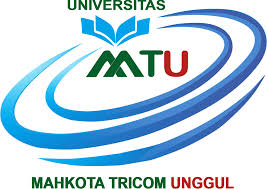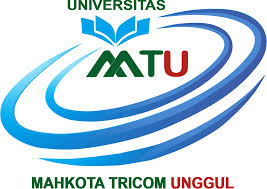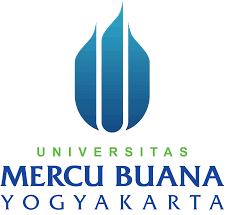Pre-scaling up of Improved Maize Technology in the Lowland and Moisture Stress Areas, Borena Zone, Southern Oromia, Ethiopia
DOI:
https://doi.org/10.55927/fjst.v3i7.10782Keywords:
Maize, Pre-scaling up, Borena, Lowlands, TechnologyAbstract
Today, maize grows from moisture-stress areas to high rainfall areas and vice versa. The purpose of this study was to improve the productivity, local capacity and linkage among relevant stakeholders. The study was conducted in Yabello district, selected purposively based on the convenience and potentiality of maize production. A total of 18 trial farmers selected purposively. A land size of 0.25ha was used at each site of the trial farmers. All agronomic practices applied. Both quantitative and qualitative data were generated and analyzed using descriptive statistics and narration, respectively. The result revealed that the mean yield of Melkassa-1 was significant (p<0.05) across production years. High demand observed and therefore, it was recommended for further promotion until alternative variety released.
Downloads
References
Bakala, N., Taye, T., Shimelis, Y., Idao, B., Teku, Z., & Zea, L. (2019). Raising Maize ( Zea mays L .) Productivity Through Different Moisture Conservation Practices at Moisture Stress Area of Borana Zone for Small Scale Agro-Pastoralists. 15(1), 31–37. https://doi.org/10.5829/idosi.wjas.2019.31.37
Belda Edeo, Ejigu Ejara, I. J. and D. L. (2022). Adaptation of Released Open Pollinated maize varieties for Moisture Stress Areas of Borana Zone, Southern Oromia. Proceedings of Review Workshop on Completed Research Activities of Crop Research Directorate held at Batu Fish and other Aquatic Life Researc.
Compeau DR, Higgins CA, Huff, S. (1999). Social Cognitive Theory and Individual Reactions to Computing Technology: A Longitudinal Study. MIS Quarterly, 23(2), 145–158.
Coppock, D. L. (1994). The Borana plateau of southern Ethiopia: Synthesis of pastoral research, development, and change, 1980-91 (Vol. 5). ILRI (aka ILCA and ILRAD).
CSA. (2017). Agricultural Sample Survey, Volume I. Report on area and production of major crops. Private peasant holdings, Meher Season. Statistical Bulletin 584, Addis Ababa, Ethiopia.
CSA. (2020). The Federal Democratic Republic of Ethiopia Central Statistical Agency Agricultural Sample Survey 2019/20 (2010 E.C.) Volume I Report on Area and Production of Major Crops. Statistical Bulletin, I, 121.
Davis, FD. (1989). Perceived usefulness, perceived ease of use, and user Acceptance Of Information Technology. MIS Quarterly, 13(3), 319–340.
Dirriba Mengistu, S. T. and B. B. (2017). Characterization of the farming systems in Borana zone, Oromia Oromia National Regional State, Ethiopia. proceeding.
Fishbein M, and Ajzen. I. (1980). Belief, attitude, intention, and behaviour: An introduction to theory and research. Reading, Mass: Addison-Wesley.
Kebede, B., Amare, G., & Dembi, K. (2021). Popularization of Sanate Bread Wheat Variety in the Highlands of Guji Zone , Southern Oromia , Ethiopia. January. https://doi.org/10.22161/ijhaf.5.3.4
Lederer AL, Sethi V, Newkirk. HE. (1998). The implementation of strategic information systems planning methodologies. MIS Quarterly, 12(3), 445-461.
Lins, H. F. (2012). USGS hydro-climatic data network 2009 (HCDN-2009). US Geological Survey Fact Sheet, 3047(4).
Liu L, and Ma, Q. (2006). Perceived System Performance: A Test of an Extended Technology Acceptance Model, The Data Base for Advances in Information Systems-Spring-Summer 37, (Vols. 2–3).
MoANR. (2017). Plant variety release protection and seed quality control directorate. Crop Variety Register Issue No. 19. Addis Ababa, Ethiopa.
United States Department of Agriculture(USDA). (2017). Commodity database. Available: http://apps.fas.usda.gov/psdonline/ psdquery.aspx. Accessed 8 Jun 2016.
Venkatesh V, and Bala. H. (2008). Technology Acceptance Model 3 and a Research Agenda on Interventions",. Decision Sciences, 39(2), 273–315.
Venkatesh V, and Davis F. (2000). A Theoretical Extension of the Technology Acceptance Model: Four Longitudinal Field Studies. Management Science., 45(2), 186–204.
Viste, E., Korecha, D., & Sorteberg, A. (2013). Recent drought and precipitation tendencies in Ethiopia. Theoretical and Applied Climatology, 112, 535–551.
Downloads
Published
How to Cite
Issue
Section
License
Copyright (c) 2024 Teshome Kassa, Feyissa Desiso

This work is licensed under a Creative Commons Attribution 4.0 International License.

































